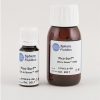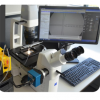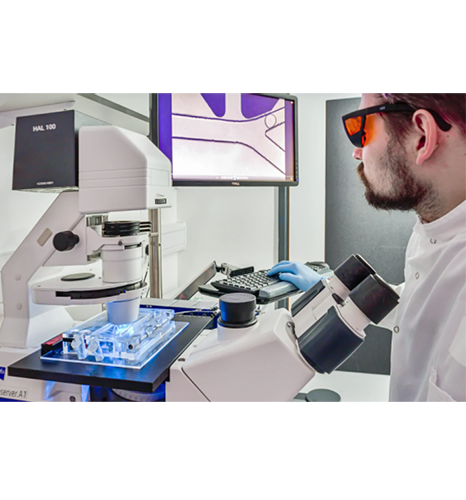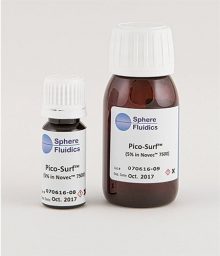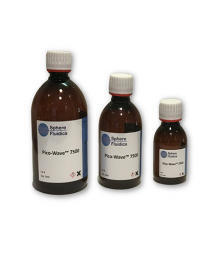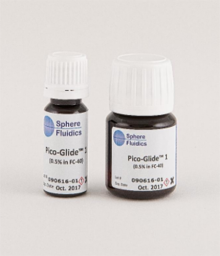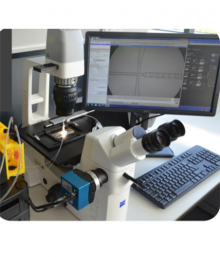Discount Products: Look through products available for a 25% – 50% discount in 2020. The items provided on a first come, first serve basis. View Discounted Products
Sphere Fluidics Picodroplet Single Cell Assay and Isolation System
- Semi-automated – Modular system for analysis of single cells or biomolecules in picodroplets.
- High-throughput – High-speed processing, detection and sorting of picodroplets (up to 12,000 per minute).
- Measure secreted proteins – Enables sensitive detection of secreted proteins (e.g. cytokines, antibodies, enzymes).
- Choice of parameters – User-defined microfluidic flow rates, picodroplet size, gating settings.
- Multiple detection modes – Range of optical detection methods (fluorescence, luminescence & scatter).
Introducing the Sphere Fluidics Picodroplet Single Cell Assay and Isolation System
The Picodroplet Single Cell Assay and Isolation System is designed to assist you in finding highly valuable rare cells from large heterogeneous populations.
This microfluidic platform offers the user a semi-automated system that is able to process, sort and isolate cells encapsulated in picodroplets. With the Picodroplet Single Cell Assay and Isolation System many parameters are under user control, such as picodroplet size, volume and flow rates. The platform also supports a range of optical detection methods, such as fluorescence, light scatter and luminescence, making it suitable for a wide range of research applications.
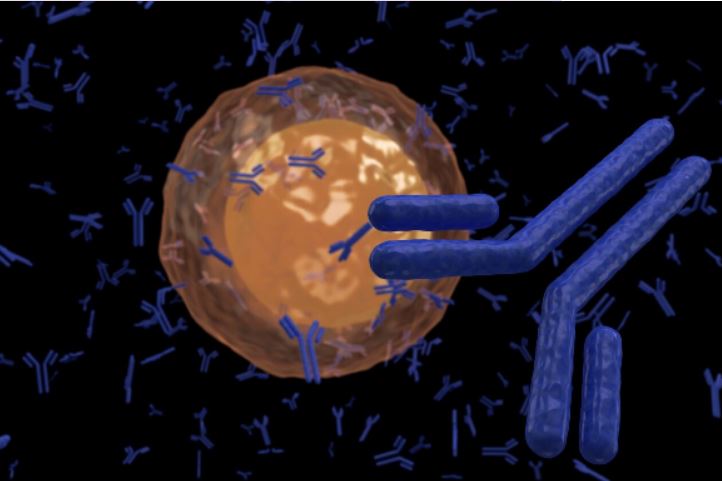
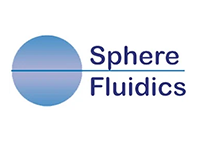
Key Features
A flexible and easy-to-use instrument to enhance your single cell research capabilities
Our research instruments are designed to assist you in finding highly valuable and rare biological variants among vast cell populations. By increasing speed and reducing cost, our picodroplet technology can help you save resources whilst boosting your chances of success.
Unlike our industrial instruments, our research instruments are semi-automated rather than fully automated. While this means they require slightly more user input to configure, it also means that they are more flexible and can be easily adapted to fit the needs of your unique research project.
We currently have two research instruments that enable you to generate, isolate, and dispense picodroplets for a range of applications. These are the Picodroplet Single Cell Encapsulation System and the Picodroplet Single Cell Assay and Isolation System. Both are compatible with our range of microfluidic chemicals and biochips .
Key Features
- Semi-automated – Modular system for analysis of single cells or biomolecules in picodroplets.
- High-throughput – High-speed processing, detection and sorting of picodroplets (up to 12,000 per minute).
- Measure secreted proteins – Enables sensitive detection of secreted proteins (e.g. cytokines, antibodies, enzymes).
- Choice of parameters – User-defined microfluidic flow rates, picodroplet size, gating settings.
- Multiple detection modes – Range of optical detection methods (fluorescence, luminescence & scatter).
Key Benefits
Some common research areas where our instruments have been used previously include (but are not limited to):
Primary B Cell Analysis
Recent developments antibody drug discovery, through single cell gene sequencing and recombinant immunoglobulin expression, have enabled direct screening of native B cells (B lymphocytes), giving the potential for much more of the mammalian immune system repertoire to be deep-mined. Our Research Instruments allow you to rapidly screen vast numbers of native B cells to find rare cells of interest.
Hybridoma Screening
Hybridoma generation and screening is a powerful tool in antibody drug discovery. Current techniques used in the field are restricted by the number of hybridomas they can screen each day, slowing down pipelines. Our Research Instruments enable the analysis of hybridomas in picodroplets, allowing for a more flexible, controlled and rapid approach.
Drug resistance studies
Drug resistance is a growing concern worldwide. The picodroplet approach enables phenotypic screening of extraordinarily large numbers (billions per day) of bacteria to identify those which have developed resistance to the drug of interest. In collaboration with Merck, we demonstrated that microfluidic-based picodroplet platforms enable effective and high-throughput assessment and isolation of antibiotic-resistant bacteria in a label-free manner.
Enzyme evolution
There is a growing focus in evolutionary biochemistry on leveraging big data and high-throughput experimental tools to uncover the expansive functional diversity of enzymes and the evolutionary processes driving it. Picodroplet technology provides a novel, flexible and rapid method for analysing enzyme evolution in a high-throughput and controlled manner.
Cell therapy
There is a growing interest and investment in T-cell immunotherapies, as they provide hope for future treatments of life-threatening diseases such as blood cancers. T-cell therapies capitalise on the body’s immune system to destroy tumour cells by collecting a patient’s own T-cells and modifying them to target cancer cells, by transferring DNA into the cells using viral vectors. The vector transfer efficiency and its consistency are critical to the final (cell) product, quality and cost. We have engineered new microfluidic-based technologies to improve the efficiency of transferring DNA into cells.
Synthetic biology
The Research Instruments are ideally suited for the rapid, miniaturised and high-throughput profiling of biosynthetic libraries. One example where we carried out this type of work was in collaboration with Imperial College London, where we combined microfluidic-based picodroplet technology with Mass Spectroscopy for the rapid screening, identification and retrieval of the best “hit” cells among synthetic metabolic pathway libraries.
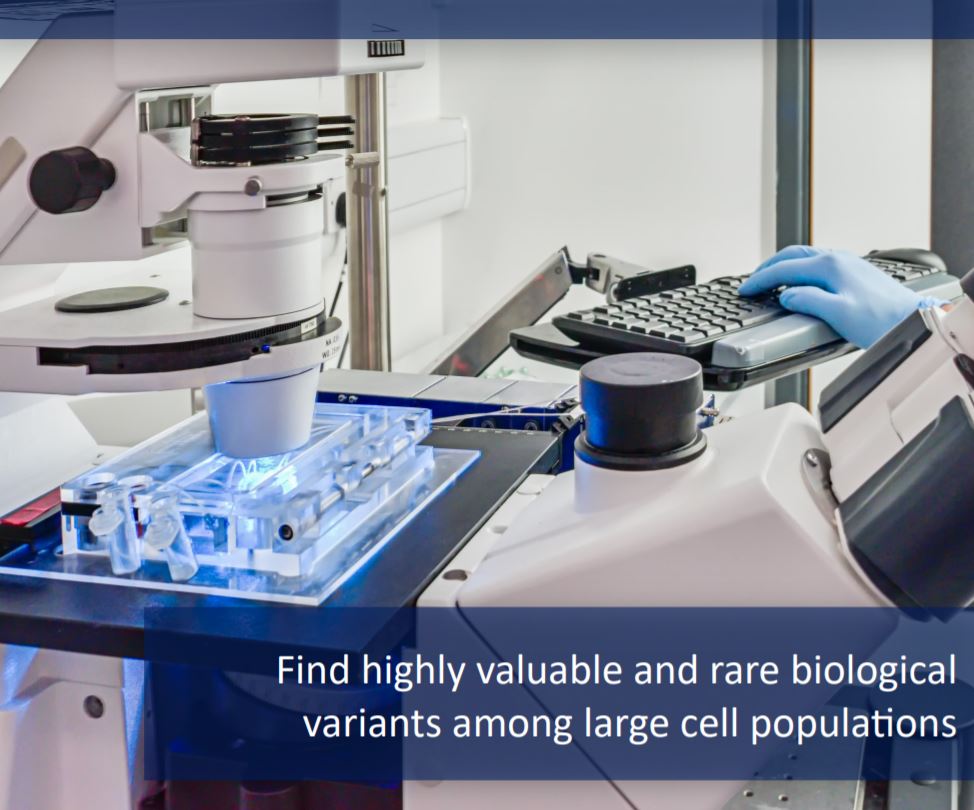
Trust the Experts at Spectra Research Corporation
- Semi-automated, picodroplet generator.
- Encapsulation of single cells or biomolecules in picodroplets.
- High-speed generation of picodroplets (up to 70,000/sec).
- Parallel incorporation of probes and cells in picodroplets enables sensitive detection of secreted proteins (e.g. antibodies, growth factors, cytokines, enzymes, etc.),
- User defined microfluidic flow rates.
- Optical imaging of picodroplet generation for QA/QC.
- Wide range of picodroplet sizes and volumes.
Specifications
| SYSTEM SPECIFICATIONS | |
| Sample input format | Syringe pumps |
| Sample input volume | ~ 50 µl – 1 mL |
| Workflow | Picodroplet production, assay, sorting and retrieval |
| Detection system | Laser-induced fluorescence |
| Picodroplet volume | 400 – 700 pL |
| Throughput | Generation rate: 100 – 5,000 per second Sorting speed: up to 300 picodroplets per second |
| SYSTEM SPECIFICATIONS | |
| Biochip compatibility | Pico-Gen™ and Pico-Sort™ biochips |
| Weight (approx.) | 150 kg (330 lbs) |
| Dimensions (approx.) | 230 cm x 170 cm x 80 cm (width x height x depth) |
| Voltage [frequency] | 100 V (min) to 240 V (max) [@ 50 Hz / 60 Hz] |
| Consumption | 500 W (max) |
| OPTICS | |
| Optical source | Laser excitation wavelength (individual laser): 491 nm or 635 nm (Note: different lasers and/or dual laser systems also available, please enquire for options and pricing) |
| Detection Filters | One appropriate filter set, e.g. FITC, Cy3, Cy5 (additional filter sets available, please enquire) |
| Detection Wavelengths | Filter-dependent |
| PMT Spectral Sensitivity | 230 nm – 920 nm |
| Camera | High-speed CMOS (800 frames-per-second (fps) at full 1280×1084 resolution. Higher speeds possible up to 29,840 fps |
| Computer | Dell Optiplex 7040 (8 GB RAM; 500 GB hard drive) or equivalent |
| PC Operating System | Microsoft Windows 7 Professional SP1 or newer version |
| Monitor | Colour LCD (21”) |
| External connections | 2 USB, 1 Ethernet |
| System Control Software | Picodroplet Single Cell Assay System Control Software (LabVIEW™), neMESYS pump software, Phantom Camera Control (PCC) software |
| Data Format | .txt (ASCII text file) |
| WORK ENVIRONMENT | |
| Clearance | 30 cm |
| Operating Temperature | 21°C ± 5°C |
| Site preparation | See our Picodroplet SCA and Isolation System Site Requirements Guide |


